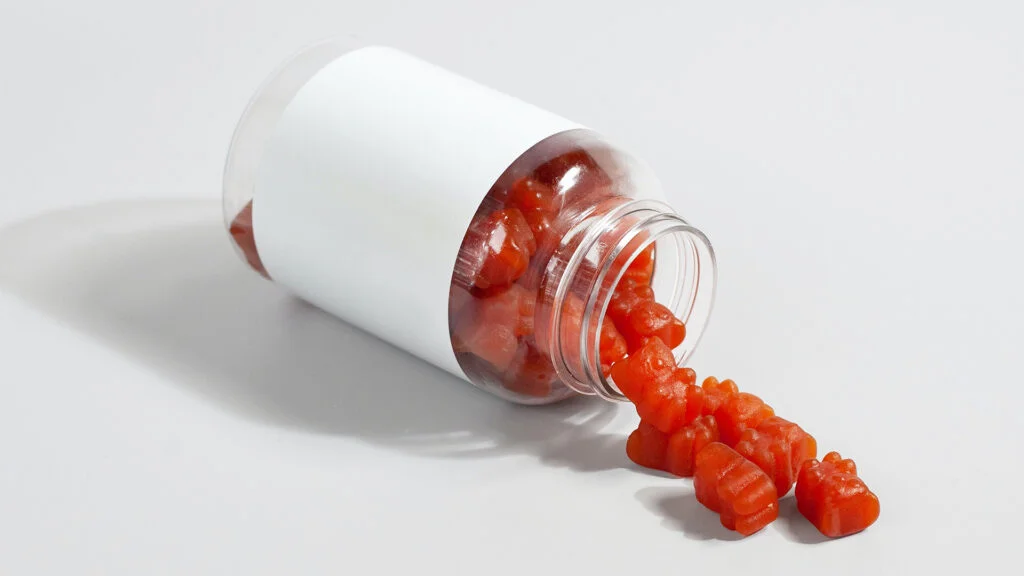A new study published in The Journal of the American Medical Association drags melatonin supplements out under what may be another uncomfortable spotlight. Researchers recently analyzed 25 products only to find that the actual melatonin content in each didn’t match up to their corresponding labels. More specifically, out of the 25 brands tested, 22 contained melatonin levels with variances ranging from 0 percent to 347 percent. Even more surprising, one brand showed no trace of melatonin but instead tipped the scales with 31.3 mg of CBD — which is understandably problematic in itself.

It’s also worth noting that the supplements tested were not chosen at random. Researchers deliberately chose the first 25 melatonin gummy products listed on the National Institutes of Health database, which, ironically, is made available so consumers can check the labels of dietary supplements sold in the United States.
We’ve Been Here Before
If this story has a familiar ring to it, that’s because this isn’t the first time melatonin supplements have been scrutinized by the research community. In 2017, Canadian researchers found that the 30 melatonin supplements they sampled varied drastically (ranging from -83% to +478%) from their respective labels. Incidentally, that study also found serotonin (a controlled substance) in 8 out of the 30 supplements analyzed. This latest research is noteworthy as it’s the first of its kind in the U.S. and the first to pull the curtain back on gummy versions of melatonin supplements.
And not to hit them when they’re down, but this isn’t the first time melatonin gummies have hit the news for the same issue. Last year, Johnson & Johnson’s Zarbees found themselves listed as the defendant in a class action lawsuit when a California mom claimed their melatonin supplement contained more melatonin than advertised, somewhere to the tune of 216 percent more.
What’s the Buzz About Melatonin?
Our bodies produce melatonin naturally. As our exposure to light decreases over the course of the day (think sunset), melatonin production kicks on to promote sleep. In the early morning hours (think sunrise), its production tapers off to promote wakefulness.
The problem here is that the takeaway for most people is that “melatonin promotes sleep,” so more has to be better. Inevitably, their dogged search for more sleep or better sleep leads them to double down on OTC supplements. In turn, these types of supplements have skyrocketed in popularity. In fact, the National Institutes of Health estimates that melatonin supplements have seen a five-fold increase in the last 20 years or so.
Peeling back the onion on its popularity, Dr. Audrey Wells, Founder of Super Sleep MD, says, “Melatonin is readily available over the counter both in single-ingredient preparations and among other ingredients advertised as a sleep aid. It’s known that melatonin plays a role in sleep, and the idea that it would be available in gummy or pill form is attractive as a convenient response to sleep problems.”
Melatonin Gummies and Kids
The bigger implications for this study are the risks that gummy melatonin supplements pose to kids. In their discussion of the study, the researchers themselves noted that “Consuming melatonin gummies as directed could expose children to between 40 and 130 times higher quantities of melatonin” as a direct result of mislabeling.
This is especially concerning when you pair that with the fact that pediatric melatonin ingestions reported to the National Poison Data System (NPDS) increased by a jaw-dropping 530 percent from 2012 – 2021. What’s even more disquieting? 94.3 percent of the 260,435 reported pediatric ingestions were unintentional.
“Gummies are familiar to children who readily accept them and view them as a treat,” says Wells. And while she notes the delivery system works far better for kids because it’s easy and attractive, she warns parents to proceed with caution. “With any type of gummy or medication that is visually similar to candy — kids can seek out what they think is candy and overdose,” she says.
What Should You Look for in a Melatonin Supplement?
“Consumers are at the mercy of the supplement industry for any over-the-counter product,” says Wells. “When choosing a supplement, it is best to choose single-ingredient preparations with the USP (United States Pharmacopeia) logo for a bit of added insurance.”
For children, Wells notes that “doses greater than 1 mg are not recommended. They likely won’t yield any added benefit and may increase risk of side effects. She also cautions that “long-term studies of melatonin use have not been conducted, so side effects from chronic usage are not known.”
Alternatives to Melatonin
“Instead of supplementing with melatonin, it’s worthwhile to engage in behaviors that encourage its timely endogenous release from the brain,” says Wells. To do so, Wells suggests leaning into some sleep hygiene. Beyond exercising, a little light discipline, aka dimming the lights in the lead-up to your bedtime, steering clear of screens and devices before bed, and keeping your room as dark as possible are key.

























